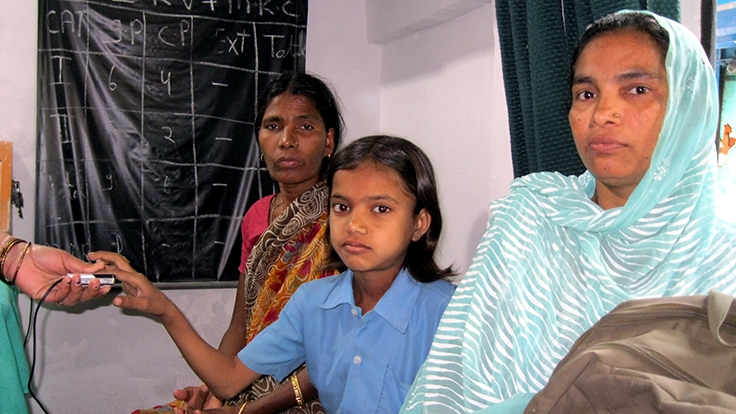For weeks, 12-year-old Sohrat Parveen suffered agonizing pains every time she ate a meal. But she was too scared to tell her mother. Then, one day, her mother got the truth out of her.
“Sohrat was thin and weak and had no appetite,” recalls Shahnaz Begum, mother of eight, whose ten-member family lives, eats and sleeps in a one-room tenement in a crowded Delhi slum. Rounds of doctors’ visits followed, each expense digging deeper into the family’s small earnings from a tiny shop nearby. Still, the child got no relief.
Finally, at Safdarjung Hospital – one of the largest public hospitals in the city – a battery of tests and scans revealed the cause of the problem; Sohrat had tuberculosis (TB), and the bacteria had invaded her stomach.
One in every five TB cases is in India
While the family was devastated, the doctors were not surprised. TB, which has been around since the time of the pharaohs, remains one of the world’s most infectious diseases and one of the biggest killers in India today. In the pre-antibiotic era it claimed a number of famous lives, including that of Kamala Nehru, wife of India’s first prime minister, and Mohammed Ali Jinnah, the first prime minister of Pakistan.
Today, India accounts for about a fifth of world’s TB burden, with an estimated 2.2 million new cases and some 300,000 people dying from the disease every year. Of these, an estimated one million cases go unreported every year, each one potentially infecting 10 to 12 others.
In recent years, a dangerous new variant has emerged – the deadly multi-drug resistant strain or MDR-TB – that is much harder to diagnose and treat. And an even more virulent strain, extensively drug resistant (XDR-TB), which does not respond to most known drugs has been reported in some parts of the country. India’s high incidence of diabetes complicates the problem, as diabetics are far more prone to catch the infection as well as to suffer from its recurrence.
The cure for TB is both long and difficult. It involves nine months of medication – often with unpleasant side effects – for the drug-sensitive strain, and an even more exacting two year-long treatment with a much stronger cocktail of drugs, at a cost of Rs. 1 lakh ($2,000) per case, for the drug-resistant variety.
Rapid urbanization can fuel TB’s spread
India’s massive wave of urbanization intensifies the chances for the infection to spread. TB bacteria proliferate in dank, dark slums such as the one where Sohrat lives. Their warrens of narrow lanes and haphazard jumble of homes, shops, and workshops are packed so tightly together that little light and air can filter through. And, these dense labyrinths are spreading rapidly across the country as legions of people flock to towns and cities in search of a better life.
Well-to-do people are not immune. Posh neighborhoods stand cheek-by-jowl with densely packed pockets of poverty in almost every Indian city, and airborne bacteria know no boundaries.
"TB anywhere is TB everywhere" says Dr. Peter Small, program officer with the Gates Foundation. "Unlike HIV/AIDS from which people can protect themselves, TB is a threat to everyone who breathes, rich and poor.”
Greater attention and resources needed
Clearly, greater attention and resources are needed to control the spread of the infection. India today spends the least among the high TB burden nations, allocating just $115 per case, while China, for example, spends about $300 per case, Brazil $750 and South Africa $1,000.
Moreover, few private health practitioners know the correct drug regimen to treat the disease. They often prescribe expensive diagnostic tests that fall far short of national and international standards – leading to tens of thousands of misdiagnoses every year, and fueling the spread of the drug-resistant strain.

